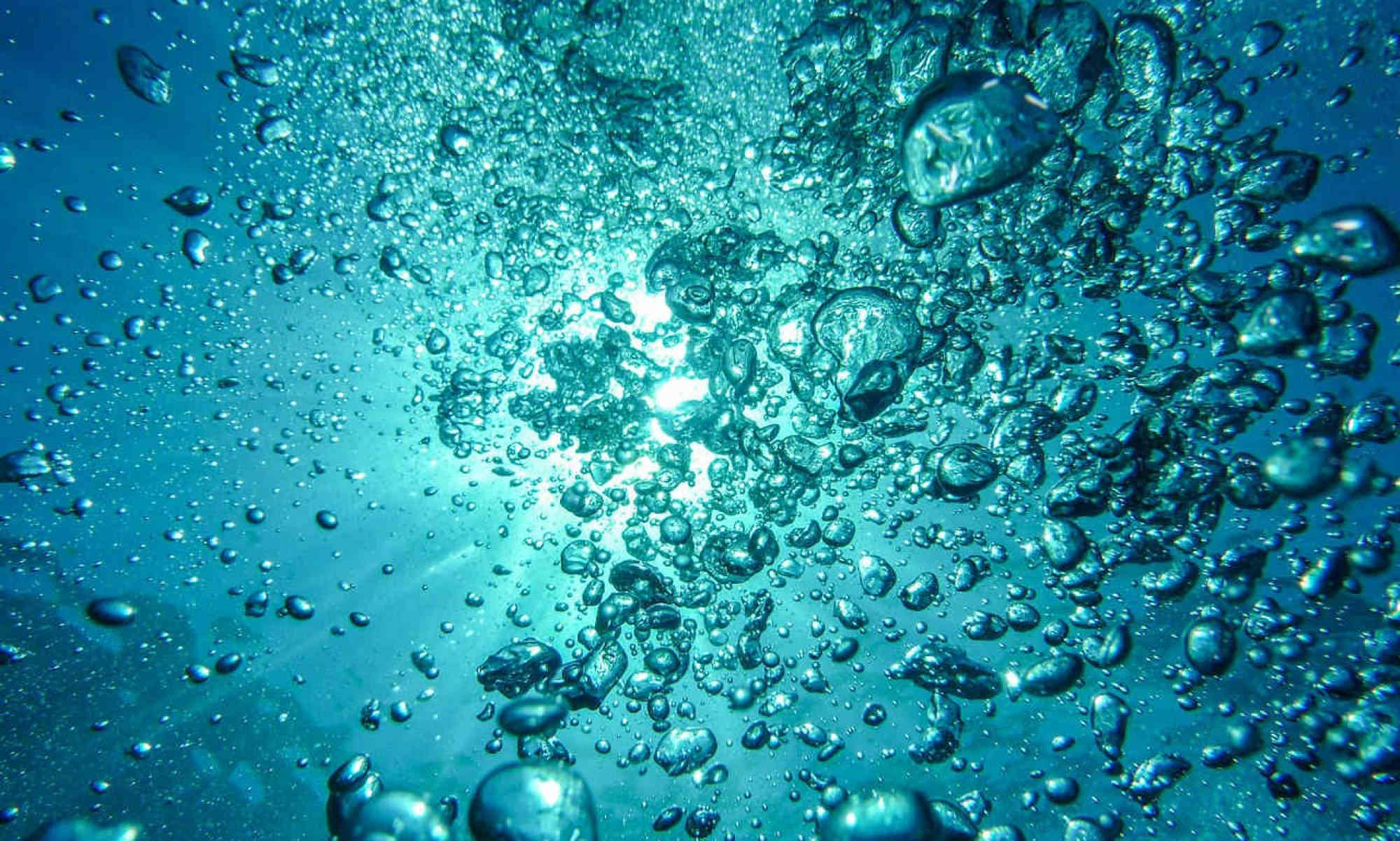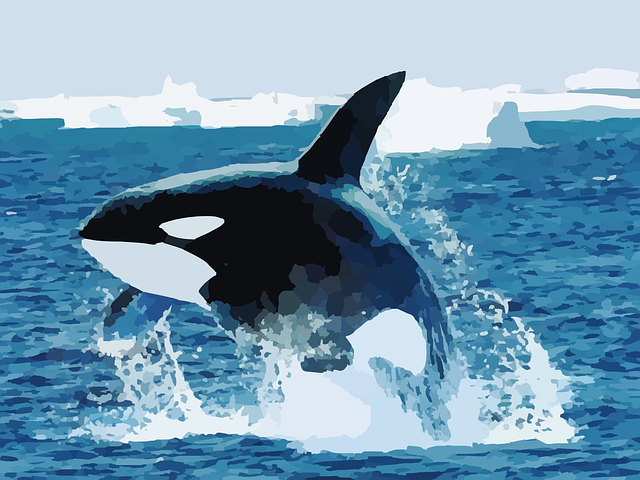
The term whale is used broadly to refer to all large cetaceans. Cetaceans are mammals totally adapted to aquatic life.
Actually, the whale species are divided into two suborders. The first one is the Mysticeti, known as baleen whales and the suborder Odontoceti. They are also known as jagged cetaceans. These are characterized by the presence of teeth instead of beards, as in the case of mysticetes.
These large mammals also received by scientists a “genus” and a “Binomial nomenclature”. Carl Linnaeus in the eighteenth century gave birth to the majority of the Binomial nomenclature.
Carl Linnaeus, also known after his ennoblement as Carl von Linné, was a Swedish botanist, physician, and zoologist who formalized the binomial nomenclature, the modern system of naming organisms. He is known as the “father of modern taxonomy”. Many of his writings were in Latin, and his name is rendered in Latin as Carolus Linnæus.
Binomial nomenclature is a formal system of naming species of living things by giving each a name of two parts. Both of which use Latin grammatical forms, although they can be based on words from other languages. Such a name is called a binomial name, binomen, binomial name or a scientific name. The first part of the name – the generic name – identifies the genus to which the species belongs, while the second part – the specific name or specific epithet – identifies the species within the genus.
Let’s analyze some of the species of toothed whales that exist today.
Beluga Whale
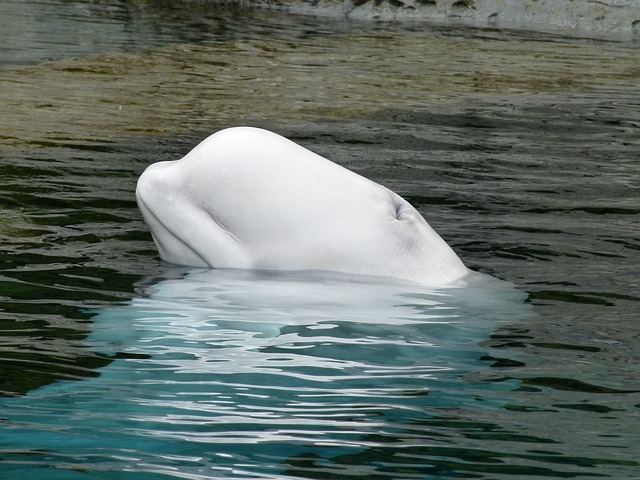
Genus: Delphinapterus
Scientific name: Delphinapterus leucas
The genus, âDelphinapterusâ, means “dolphin without fin” and the name of the species âleucasâ means “white”.
Beluga Whale Characteristics
The young at birth are usually gray. After one month of life, the color turns dark gray or bluish gray. And later, they begin to lose pigment progressively until they reach the distinctive white color.
The adult specimens are difficult to confuse because they are the only cetaceans wholly white or whitish gray. It has a type of head formation that protrudes a little, like a crest, instead of a fin. Experts believe that this physical feature helps them stay warm. They have short pectoral fins and a long tail. The greater this whale, the longer its tail length in relation to the body. The fins are small in proportion to the size of the body. They are rounded, and slightly curled at the tips.
A difference with other cetaceans is the change of skin they have. During the winter there is a thickening of the epidermis and its skin may turn yellowish. During the summer, in the estuaries, they rub with the gravel of the bottom of the rivers to get rid of this skin coating. This is how the skin is renewed.
Teeths
It has about eight to ten small teeth, slightly curved, in each mandibular quadrant, with an average of 36 pieces in total and a maximum of 40. It does not use the teeth to chew, but it does use to grab its prey, tear it and then swallow it whole.
Their pods are groups of about ten individuals on average. But during the summer, hundreds and even thousands gather in estuaries and shallow coastal waters.
Beluga Whale Size comparison :

The males are longer than the females by 25% and are more robust. These measure between 3.5 and 5.5 meters in length, while the females grow between 3 and 4.1 meters.
Between 40 and 50% of your body weight is fat that covers your entire body, except for the head. This fat acts as an insulator in water with a temperature between 0 to 18 ° C, besides being an important reserve during periods of fasting.
Beluga Whale Habitat or area of distribution:

The Arctic and Subarctic regions. They have a series of anatomical and physiological characteristics that differentiate it from the other cetaceans, for example, its color. The fact that it is white makes it camouflage in the middle of the ice to hide from its predators: The Polar Bear and the Orca.
Beluga Whale Diet:
In general, the main diet of this cetacean is made up of fish. Chapels, smelts, flounders, flounders, herring and other salmon also consume a considerable volume of invertebrates such as shrimp, squid, crabs, clams, octopus, snails, worms and other inhabitants of the seabed.
Beluga Whale Gestation Period
Females usually have offspring every two to three years. Data of gestation periods ranging from 12 to 14½ months have been published.
Beluga WhaleAge of maturity :
Most specialists estimate that males reach sexual maturity between four and seven years, and females do between four and nine years.
Beluga WhaleAverage life :
35 â 50 years
Beluga Whale Status
According to the IUCN evaluation, the Beluga Whale status is: “Least Concern“. However, The federal government declared the Beluga whales of Cook Inlet as an endangered species in 2008.
A species is considered to be of “Least Concern” when, after being assessed by IUCN, it does not meet any of the criteria of the categories in danger, critically endangered, vulnerable or near threatened of the Red List prepared by the organization. Consequently, the minor concern category on the list includes all abundant and widely distributed taxa, which are not under threat of disappearing in the near future, thus being the lowest risk on the list.
Narwhal Whale
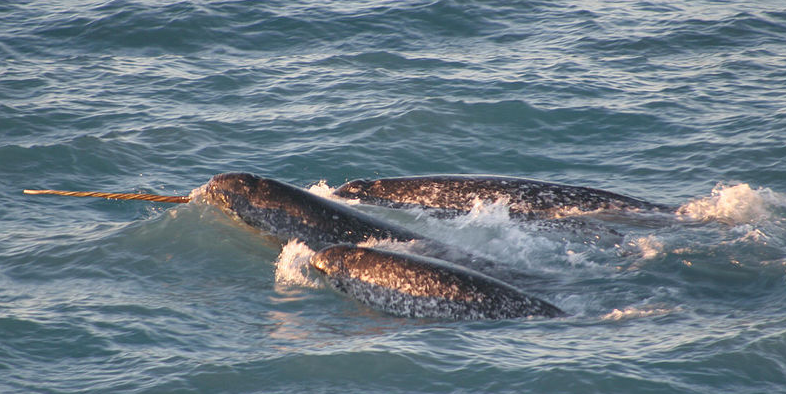
The narwhal is a medium-sized toothed whale that possesses a large “tusk” from a protruding canine tooth.
Genus: Monodon
Scientific name: Monodon monoceros
Narwhal Whale Characteristics:
This species is adapted to live in the Arctic and feeds on seabed animals. It lacks a dorsal fin and has a medium size among cetaceans, with an average length in adults ranging between 4 and 4.5 m and weight between 1000 and 1600 kg.
The most striking feature of this species is the tusk that resembles a large horn, protrudes through the left jaw and the skin of the face. The average length of this tooth in adults is 2 meters and weighs up to 10 kg. With frequency, these fangs can break but are able to repair the damage by growing a new layer of dentin.
Narwhal Whale Average life:
The narwhal is 30-40 years but many have reportedly lived beyond that, up to 50 years old.
Narwhal Whale Social life:
Most of the herds are formed by groups of two to ten individuals, but sometimes -mainly during the summer- large groups of hundreds and even thousands of individuals gather.
Narwhal Whale Size comparison:

Narwhal Whale Habitat or distribution area:
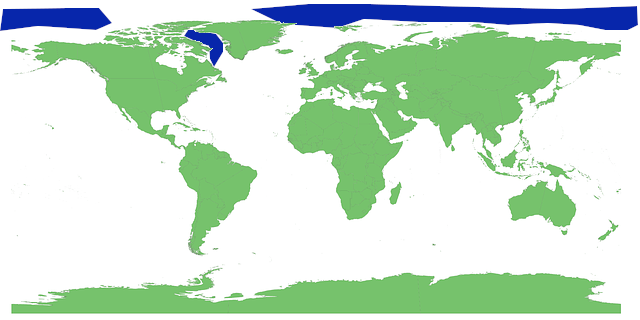
It mainly lives around the blocks of ice that form during the prolonged winters of the Arctic, migrating to the bays and circumpolar fjords during the summer. The scientists believe that the world population is just over 75 000 copies.
Narwhal Whale Diet:
It has a diet that is restricted only to some fish and crustaceans, which are fed primarily during the winter months when it consumes a large volume of prey that it captures on the seabed. To do this you must make dives that frequently exceed 800 m below the surface, which can last up to 30 minutes. After the sperm whale and marine elephant is the marine mammal that dives deeper.
During the summer the main diet consists of Arctic cod, polar cod, and squids of the genus Gonatus. In autumn, the squids of the species Gonatus fabricii seems to be the only source of food. At the end of autumn and winter, the main food consists of black halibut.
The immersion distances under the surface recorded during the winter to obtain food, range between 200 and 800 m depending on the area.
Narwhal Whale Gestation period:
The duration of pregnancy is estimated at 15.3 months. the interval between gestations is three years. Normally, only one calf is born, but cases of twins have been recorded.
Narwhal Whale Age of maturity:
The age at which they reach sexual maturity is estimated between six to seven years for females and nine years for males.
Narwhal Whale Status
Least Concern
At least concern (LC) species is a species which has been categorized by the International Union for Conservation of Nature (IUCN) as evaluated but not qualified for any other category. They do not qualify as threatened, near threatened, or conservation dependent.
Sperm Whale
The Sperm Whale or Cachalot is the largest of the toothed whales.
Genus: Physeter
Scientific name: Physeter macrocephalus
Sperm Whale Characteristics:
The most distinctive aspect of the sperm whale comes from its huge head, which often reaches a third of the animal’s length.
It is the largest tooth animal that exists; the males can grow up to 20.5 meters long. The head measures one-third of the total length of the animal and possesses the largest brain among existing animals. This cetacean lives in groups in which the females and their offspring are separated from the older males that wander alone; the females cooperate with each other to protect and feed their offspring. The females are very protective of their offspring and work together to ensure that they are well cared for. One or two females submerge to bring food to the younger ones, while the others take care of all of them.
They are marine mammals that dive deeper. They are believed to be able to reach up to three kilometers below the surface and make dives of up to 90 minutes.
Between dives, go up to breathe for about 8 minutes before the next dive.
Sperm Whale Average life:
Sperm whales can live 70 years or even more.
Sperm Whale Social life:
Sperm whales are social animals that congregate in small herds made up of females, their young and some young males.
Sperm Whale Size comparison:

Sperm Whale Habitat or area of distribution:

Specimens of both sexes inhabit the oceans and tropical and temperate seas; however, only adult males are found at higher latitudes.
It abounds relatively from the poles to the equator and is found in all the oceans.
Populations are denser close to continental shelves and canyons. Sperm whales are usually found in deep, offshore waters, but may be closer to shore, in areas where the continental shelf is small and drops quickly to depths from 310 to 920 meters.
There are around 200,000 sperm whales left in the wild.
Sperm Whale Diet:
This species feeds on squids and fish, immersing itself in its search at depths of up to three kilometers, becoming the marine mammal that dives deeper. Their squid-based diet includes the largest species: the giant squid and the colossal squid.
Sperm Whale Gestation period:
The gestation lasts 14 to 16 months, producing only one baby. The females generally have intervals between births of three to six years.
Sperm Whale Age of maturity:
The females reach sexual maturity between 7 and 13 years and males at 18 years. Once they reach maturity, the males move to higher latitudes, where the water is colder and the food more abundant, while the females remain at low latitudes.
Sperm Whale Status:
Vulnerable
A vulnerable species is one which has been categorized by the International Union for Conservation of Nature as likely to become endangered unless the circumstances that are threatening its survival and reproduction improve.
Pilot Whale
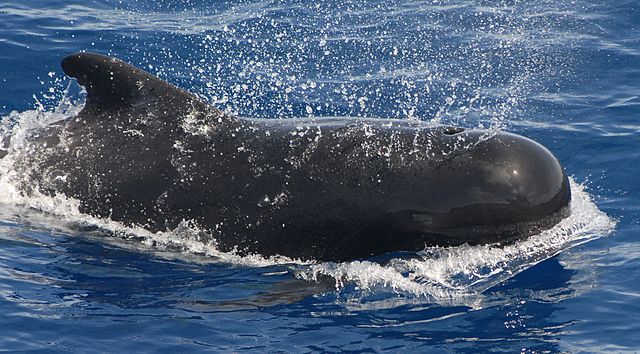
The two extant species are the long-finned pilot whale and the short-finned pilot whale. Pilot whales are among the largest of the oceanic dolphins, exceeded in size only by the killer whale. They and other large members of the dolphin family are also known as blackfish.
Genus: Globicephal
Scientific name:
- Globicephala macrorhynchus (short-finned pilot whale)
- Globicephala melas (long-finned pilot whale)
Pilot Whale Characteristics:
Pilot whales are mostly dark grey or black but have some light areas such as a grey saddle patch behind the dorsal fin and other light areas are an anchor-shaped patch under the chin.
They were traditionally differentiated by the length of the pectoral flippers relative to total body length and the number of teeth. The long-finned pilot whale was thought to have flippers one-fifth of total body length, compared to the short-finned pilot whale have flippers one-sixth of total body length.
They are capable of diving to depths of 600 meters, but most dives are to a depth of 30â60 m.
Pilot Whale Average life:
In both species, life expectancy is around 45 years in males and 60 in females.
Pilot Whale Social life:
Both species live in groups of 10â30, but some groups may number 100 or more. The pods are highly stable and the members have close matrilineal relationships. Pod members are of various age and sex classes, although adult females tend to outnumber adult males.
Pilot Whale Size comparison:

Pilot Whale Habitat or area of distribution: :
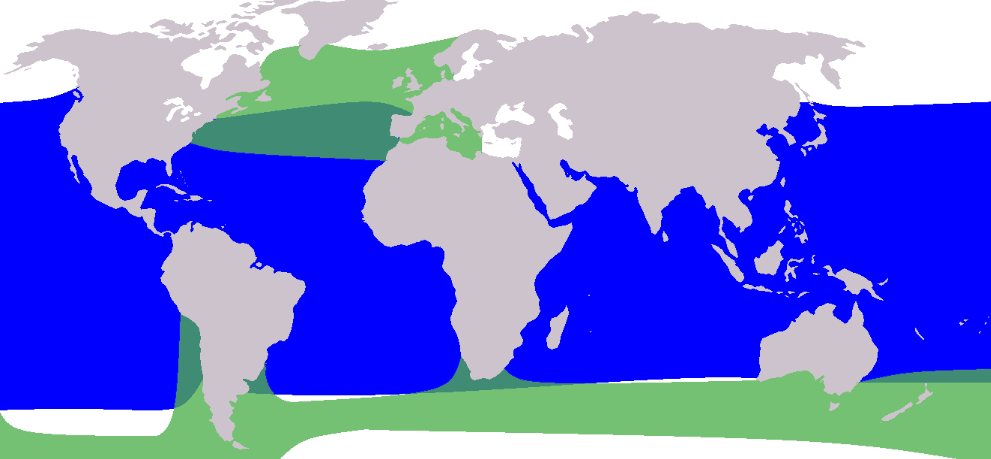
Between the two species, they range nearly worldwide, with long-finned pilot whales living in colder waters and short-finned pilot whales living in tropical and subtropical waters.
The smaller group is found in a circumpolar band in the Southern Ocean from about 20 to 65°S. An estimated more than 200,000 individuals. The second, much larger, population inhabits the North Atlantic Ocean, in a band from South Carolina in the United States across to the Azores and Morocco at its southern edge and from Newfoundland to Greenland, Iceland, and northern Norway at its northern limit. This population was estimated at 778,000 individuals.
The short-finned pilot whale is less populous. It is found in temperate and tropical waters of the Indian, Atlantic and Pacific Oceans. Its population overlaps slightly with the long-finned pilot whale in the temperate waters of the North Atlantic and Southern Oceans. About 150,000 individuals.
Pilot Whale Diet:
Both species eat primarily squid. The whales make seasonal inshore and offshore movements in response to the dispersal of their prey. Fish that are consumed include Atlantic cod, Greenland turbot, Atlantic mackerel, Atlantic herring, hake, and spiny dogfish in the northwest Atlantic.
Feeding dives may last over ten minutes. When making deep dives, pilot whales often make fast sprints to catch fast-moving prey such as squid.
Pilot Whale Gestation period:
Pilot whales have one of the longest birth intervals of the cetaceans, once every three to five years. For long-finned pilot whales, gestation lasts 12â16 months and short-finned pilot whales have a 15-month gestation period.
Pilot Whale Age of maturity:
For the short-finned pilot whale, females become sexually mature at 9 years old and males at about 13â16 years. For the long-finned pilot whale, females reach maturity at around eight years and males at around 12 years.
Pilot Whale Status:
Least Concern
At least concern (LC) species is a species which has been categorized by the International Union for Conservation of Nature (IUCN) as evaluated but not qualified for any other category. They do not qualify as threatened, near threatened, or conservation dependent.
Killer Whale

The killer whale or orca is a toothed whale belonging to the oceanic dolphin family, of which it is the largest member.
Genus: Orcinus
Scientific name: Orcinus orca
Killer Whale Characteristics:
This cetacean has a robust and hydrodynamic complexion.
It has a very long dorsal fin that reaches up to 1.8 m in males and has a white and black coloration that is distributed in a particular way, which is specific to each individual and distinguishes it from the others. The orca has a marked sexual dimorphism; the females are smaller than the males and have the shortest dorsal fin. While a female usually weighs less than 4 t and is about 7.7 m long, an adult male can reach a weight of 5.5 t and measure up to 9 m in length.
The species has a distinctive color distribution. The dorsal region is black; the chest, belly, and flanks are white, and it has a white patch behind the eyes. The orca has good vision inside and outside the water, excellent hearing and a good sense of touch.
The orca has a combination of strength, speed, and intelligence that makes it a very versatile predator; in fact, by being at the top of the food. chain and not having natural enemies, it becomes a super-predator of the oceans.
Killer Whale Average life:
The maximum age reached by both genera ranges from 80 to 90 years in females and 50 to 60 years in males.
Killer Whale Social life:
The individuals of the species form complex social structures and organize themselves into matrilineal groups.
The size of the groups probably depends on the spatial distribution, quantity, behavior, and type of prey. The killer whale usually lives in groups of less than forty individuals.
Killer Whale Size comparison:

Killer Whale Habitat or area of distribution:

It is distributed by all the oceans of the world, from the waters of the Arctic and Antarctic to the tropical seas; however, it prefers temperate and cold waters and areas near the coasts.
Killer Whale Diet:
Its diet is very varied and, depending on the type of killer whale, feeds on fish, squid and marine mammals. As a super predator at the top of the trophic chain, without any enemy or natural predator, the orca is even capable of feeding on species as large and as well prepared for an attack as they are.
Killer Whale Gestation period:
The gestation period varies between 15 and 18 months.
They give birth to one young for each birth with a period between each birth of 5.3 years on average.
Killer Whale Age of maturity:
The Males reach sexual maturity at around 13 years and females reach it between 6 and 10 years.
Killer Whale Status:
In 2008, the IUCN (International Union for Conservation of Nature) changed its assessment of the killer whale’s conservation status from conservation dependent to data deficient, recognizing that one or more killer whale types may actually be separate, endangered species.
You may also like…
In ofWhale.com you can find the online whale toys youâre looking for, like baby shark toys, stuffed toys or a whale bath toy. Letâs get started with the selected gallery or check more options on the links.
In our world, whales have a great message to transmit to humanity and we agree with them. For you and for your children choose the whale t-shirts best fits your message
Most people loves whales enjoy using CDs with the whale sounds , whale songs and sounds of the waves to obtain a peaceful and restful sleep, perform meditation and relaxation.
Ofwhale.com is the right place where you can get the whale pictures you deserve for your home. Read more about the feelings you convey and the styles you can choose.
